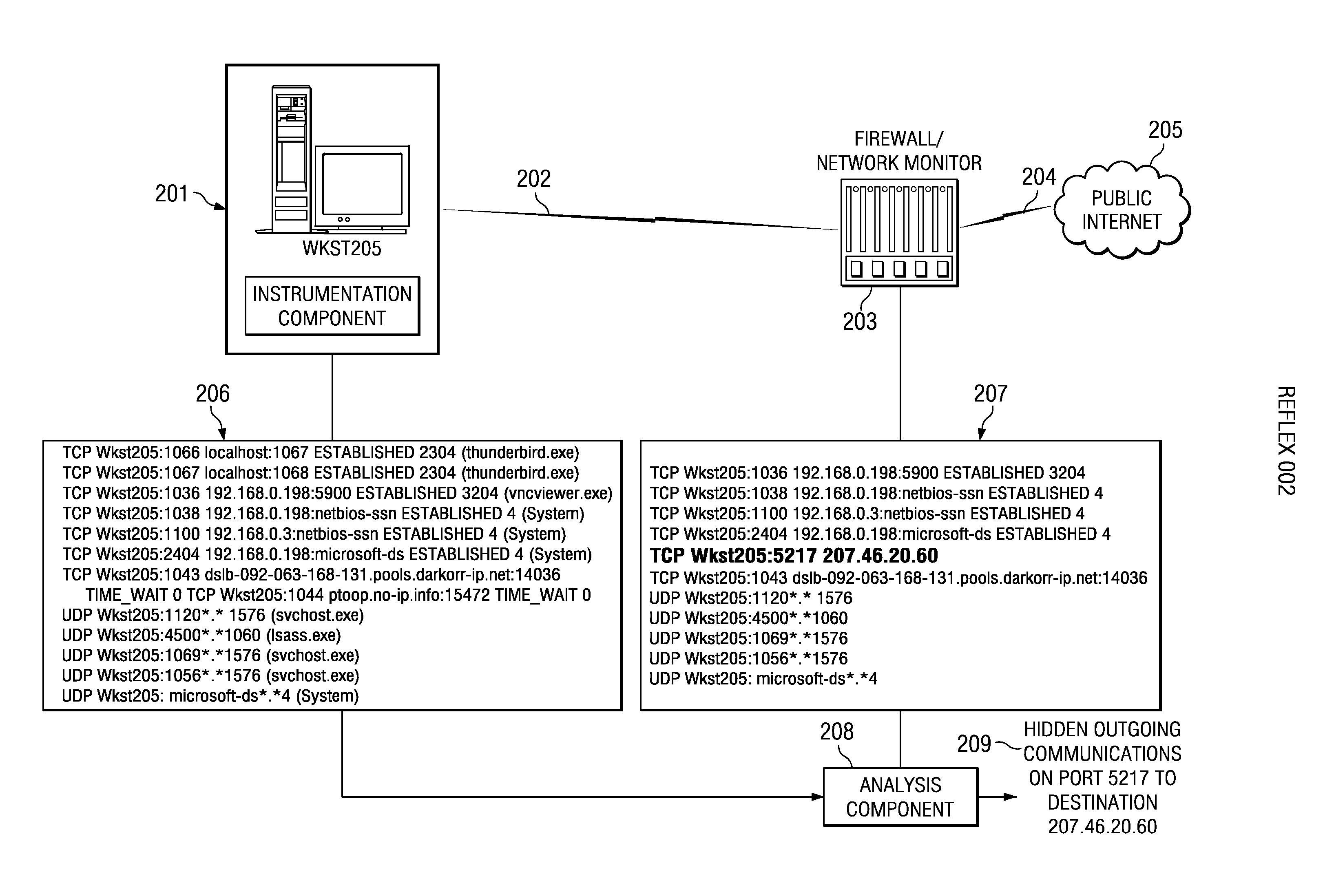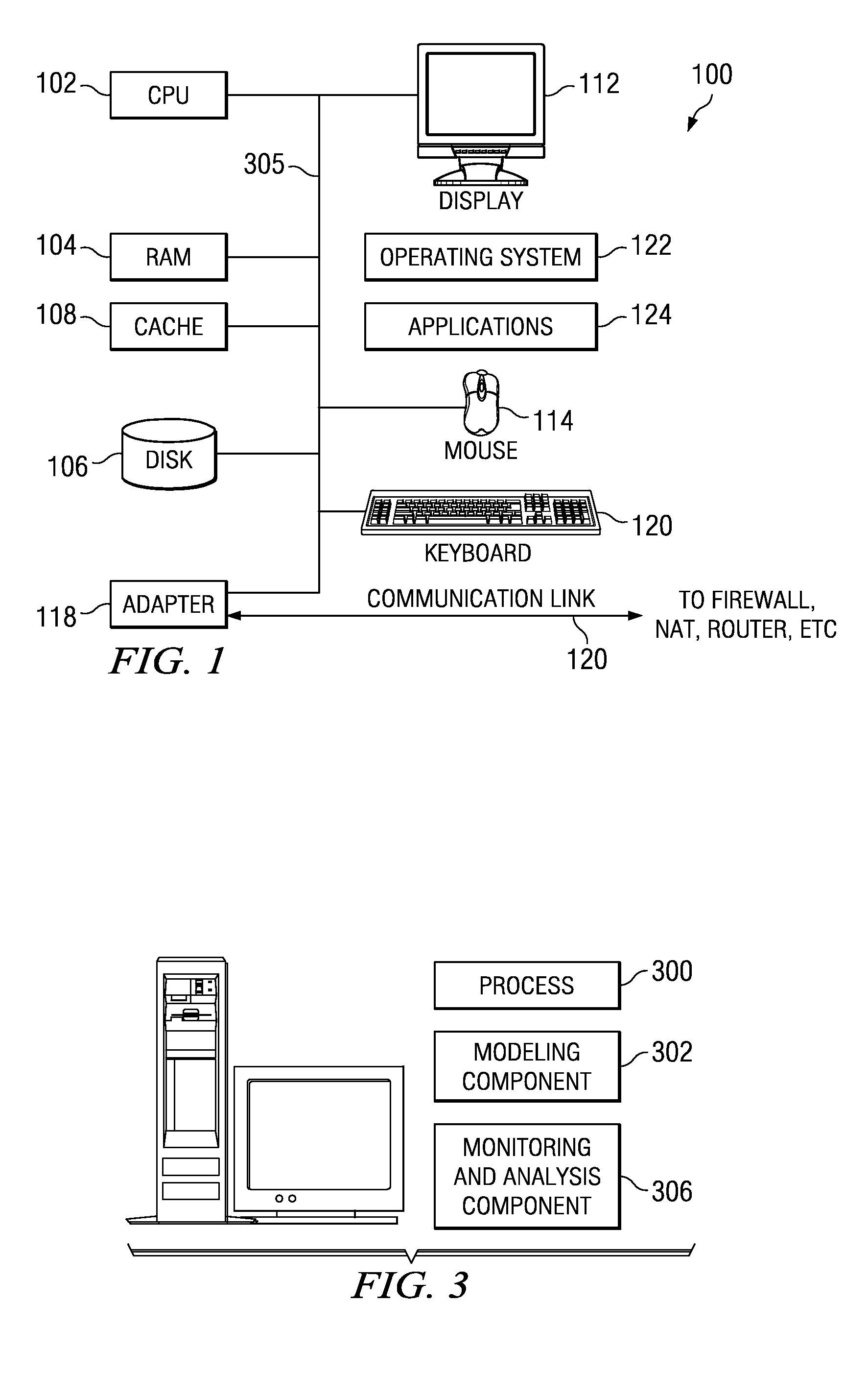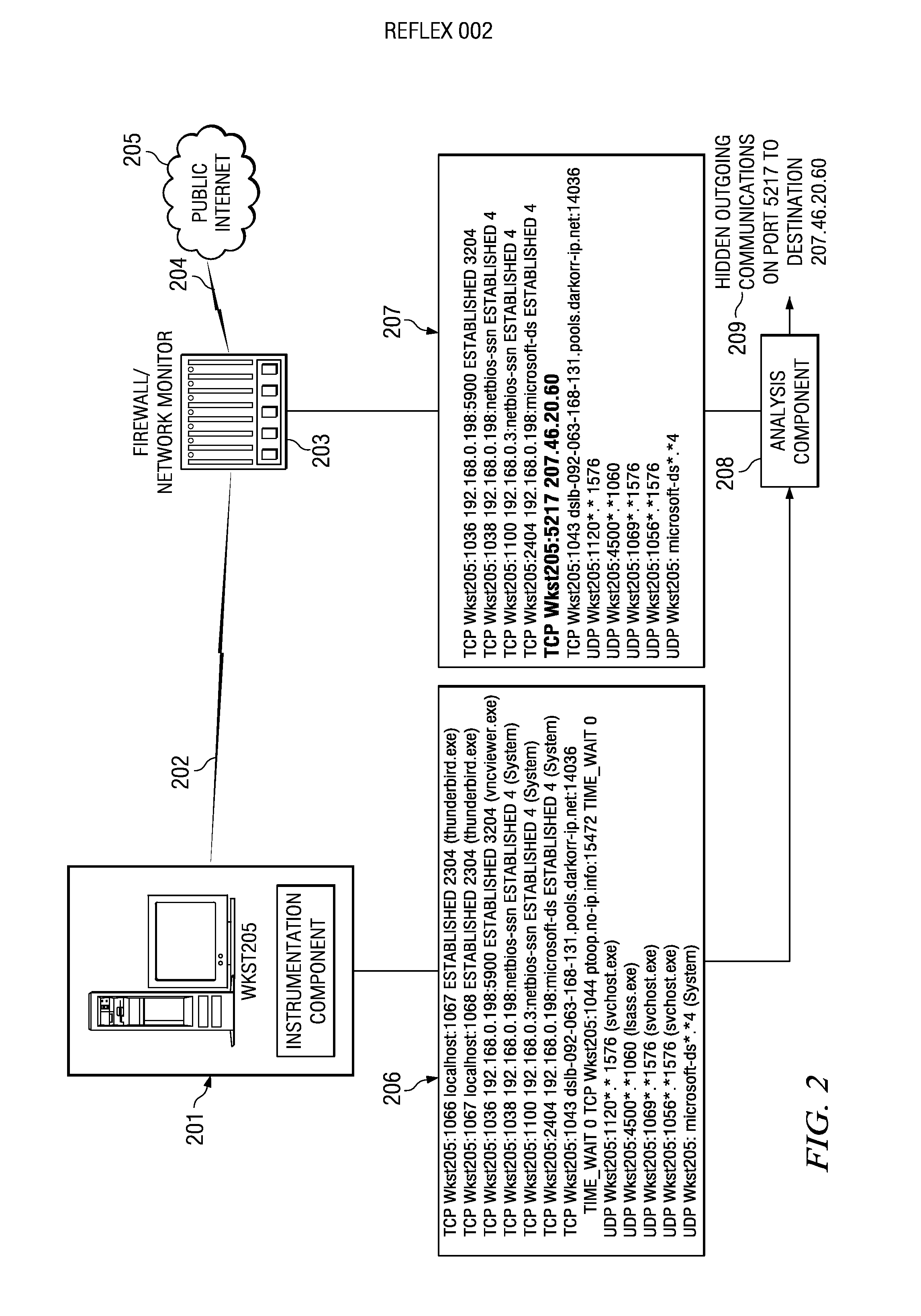Detection of system compromise by per-process network modeling
a network model and per-process technology, applied in the field of computer system security, can solve problems such as the vulnerability of each application that performs network activity with other machines, the inability to completely protect the system from compromise, and the inability to make access to services through some communication mechanism, so as to achieve efficient and cost-effective
- Summary
- Abstract
- Description
- Claims
- Application Information
AI Technical Summary
Benefits of technology
Problems solved by technology
Method used
Image
Examples
Embodiment Construction
[0022] As will be seen, the present invention contemplates using network activity monitoring in several different ways. In one embodiment, a network modeling scheme gathers data to build a model and then compares networking activities to the model as they occur. This embodiment may be carried out within the computer system itself. In an alternate embodiment, modeling is not required and the comparison is done of network data collected at one layer of a communication system to network-related data collected at another layer.
[0023] A computer or data processing system 100 in which the present invention may be implemented is illustrated in FIG. 1. This system is representative, and it should not be taken to limit the present invention. The system includes processor 102 coupled to memory elements through a system bus 105. The memory elements include local memory 104 employed during actual execution of the program code, disk storage 106, as well as cache memory 108 that provides tempora...
PUM
 Login to View More
Login to View More Abstract
Description
Claims
Application Information
 Login to View More
Login to View More - R&D
- Intellectual Property
- Life Sciences
- Materials
- Tech Scout
- Unparalleled Data Quality
- Higher Quality Content
- 60% Fewer Hallucinations
Browse by: Latest US Patents, China's latest patents, Technical Efficacy Thesaurus, Application Domain, Technology Topic, Popular Technical Reports.
© 2025 PatSnap. All rights reserved.Legal|Privacy policy|Modern Slavery Act Transparency Statement|Sitemap|About US| Contact US: help@patsnap.com



